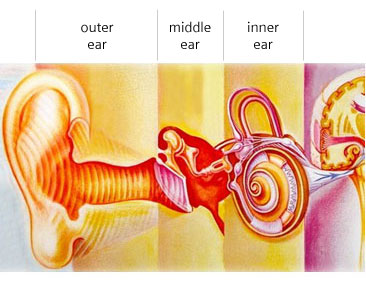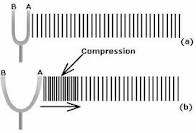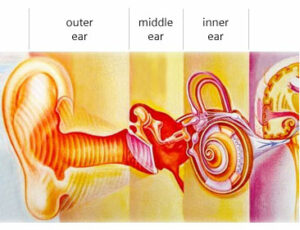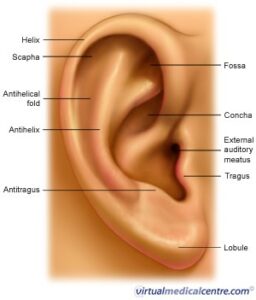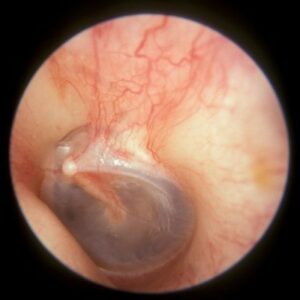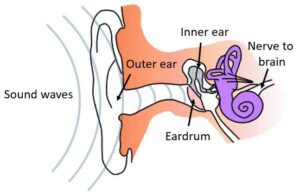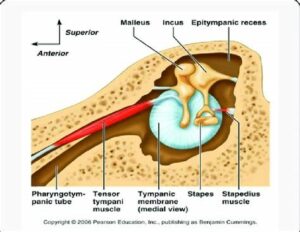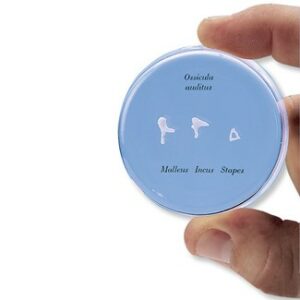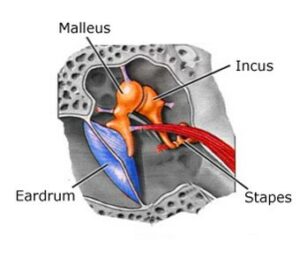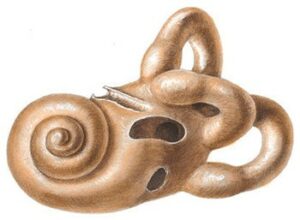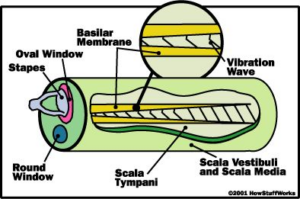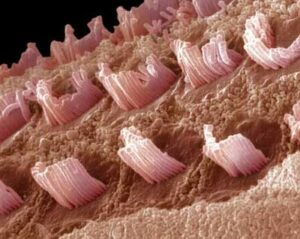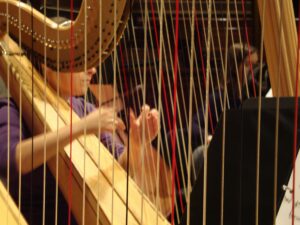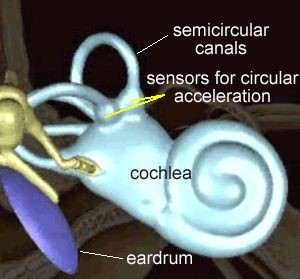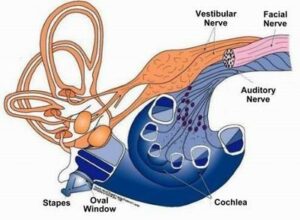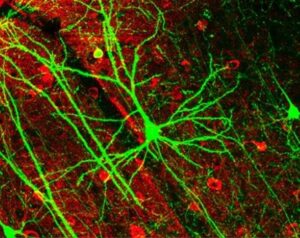The Miraculous Human Ear, Created by God
by
Dr Richard Kent MB BS
Website: www.drrichardkent.org
Email: [email protected]
God has eyes and ears!
Proverbs 20:12-13
The hearing ear and the seeing eye,
The LORD has made them both.
Psalms 94:9
He who planted the ear, shall He not hear?
He who formed the eye, shall He not see?
Here is NASA’s Transition Region and Coronal Explorer, known as TRACE
TRACE, the Nasa Trace Satellite
TRACE is used to listen to the very low frequency sound of the sun.
Actually, the human ear is infinitely more complex than TRACE!
………………………….
Have you ever listened to the following…
The crashing waves on a sea shore…
A bird singing….
Thunder and lightning…………
A whisper………………………..
These sounds help us to appreciate God’s wonderful Creation, using our ears, which are also created by God
The volume of these sounds varies dramatically in intensity, and God has designed our ears so that we can hear all of these different sounds, without damaging our ears!
The human ear actually performs two separate functions:
- Hearing
- Balance
………………………………………
God created sound!
God also created the human ear to hear sound with!
Sound – is actually variations in air pressure moving through the air.
When we hear, we are actually listening to tiny variations of air pressure.
A tuning fork demonstrates how air is compressed, which is how sound waves travel.
The vibration of a tuning fork causes the air particles to be compressed, causing a wave of compressed air particles to travel though the air.
Variations of frequency and the amplitude of sound are caused by variations in the compression of the air waves.
Your ears are completely mechanical
They pick up all the sounds around you and then translate this electrical information into a form that your brain can understand.
One of the most remarkable things about this process is that it is completely mechanical.
Your sense of smell, taste and vision all involve chemical reactions, but your hearing system is based solely on physical movement.
There are three parts of ear
The ear is divided into three parts:
- The external ear
- The middle ear
- The inner ear
The external ear is designed to acoustically capture sound, and direct sound down the external auditory meatus.
The outer ear is called the Pinna
The pinna is very carefully designed by God to increase the “acoustic advantage” of sound by 2-5 decibels.
Sound travels through the air as vibrations in air pressure. To hear sound, your ear has to do three basic things:
- Direct the sound waves into the hearing part of the ear
- Sense the fluctuations in air pressure
- Translate these fluctuations into an electrical signal that your brain can understand
The pinna, the outer part of the ear, serves to amplify the sound wave.
The outer ear is pointed forward and is structured to help you determine the direction of a sound.
Your ears can detect if a sound is coming from behind you or above you.
Your brain recognizes distinctive patterns and determines whether the sound is in front of you, behind you, above you or below you.
Your brain determines the horizontal position of a sound by comparing the information coming from your two ears.
If the sound is to your left, it will arrive at your left ear a little bit sooner than it arrives at your right ear. It will also be a little bit louder in your left ear than your right ear.
Since the pinnae face forward, you can hear sounds in front of you better than you can hear sounds behind you.
The External Auditory Meatus
The “ear hole” is called the external auditory meatus:
The External Auditory Meatus protects the middle ear, with its very delicate tympanic membrane and ossicles
The Pinna and External Auditory Meatus amplifies the sound in the 2000 hertz frequency by 5-10 decibels.
So, the external ear is like a PA system!
…….
The Tympanic Membrane
The ear drum is called the tympanic membrane
It is about 10 mm wide, and separates the external ear from the middle ear.
The ear drum is rigid, and very sensitive.
Once the sound waves travel into the ear canal, they cause the tympanic membrane to vibrate.
The tympanic membrane is a thin piece of skin, about 0.4 inches) wide. It acts like a drum.
Just like a drum, even the slightest air-pressure fluctuations cause the tympanic membrane to vibrate.
The tiny muscles in the middle ear
The tympanic membrane is attached to the tensor tympani muscle, and constantly pulls the tympanic membrane inwards.
This keeps the tympanic membrane taut so that it will always vibrate.
The stapedius muscle is attached to the stapes, one of the three tiny bones in the middle ear.
Protection of the ear by the tensor tympani and stapedius muscle
Should there be a very loud noise, the tensor tympani muscle and the stapedius muscle suddenly contract.
This pulls the eardrum and the connected bones in two different directions, so the drum becomes more rigid, and the sound is dampened, so protecting the delicate inner ear.
Equalising pressure between the middle ear and the outer ear
The Eustachian Tube
The middle ear is connected to the throat via the eustachian tube.
Since air from the atmosphere flows in from your outer ear as well as your mouth, the air pressure on both sides of the eardrum must remain equal, to allow your eardrum to vibrate freely.
The eustachian tube connects the middle ear cavity to the back of the nose.
The tube opens regularly to regulate pressure around the tympanic membrane.
The Three Auditory Ossicles
The ossicles are a group of tiny bones in the middle ear.
They are the smallest bones in your body. They include:
- Themalleus, commonly called the hammer
- Theincus, commonly called the anvil
- Thestapes, commonly called the stirrup
The ossicles amplify the force from the eardrum in two ways.
The main amplification is caused by the size difference between the eardrum and the stapes.
In effect, there is hydraulic multiplication of the sound waves, using the leverage of the three ossicles.
The Inner Ear
The inner ear is called the cochlea, because it looks like a snail
The cochlea converts the physical vibrations caused by the sound wave and translate them into electrical information the Auditory Centre of the brain can interpret as sound.
The basilar membrane, is a rigid membrane within the cochlea.
The action of the stapes moves the fluid in the cochlea.
This causes a vibration wave to travel down the basilar membrane.
The basilar membrane has hair cells of different lengths, and different widths.
These hair cells actually vibrate differently, depending on the frequency of the sound.
Hair cells of the basilar membrane
There are about 20,000 to 30,000 hair cells within the basilar membrane
The hair cells are of different thickness, and different length, and vibrate at different frequencies, exactly like the strings of a harp.
When individual hair cells vibrate, they send an electrical impulse to the cochlear nerve, and to the Auditory Centre of the brain
……………………
We also balance with our ears!
The semicircular canals are all set at right angles, and act a bit like a gyroscope, telling the brain exactly where the body is positioned!
The Auditory nerve and the Vestibular nerve take electrical information about sound and position to the brain
The cochlear nerve sends these impulses on to the cerebral cortex, where the brain interprets both the sounds, and the position of the body.
The brain computes very complex information, so that we can all hear, and determine our position, without even thinking about it!
Neurons in the brain
The brain acts like NASA supercomputer, but infinitely more complex!
The auditory cortex then communicates with the rest of the brain, and takes into account information from the
- Eyes
- Ears
- Smell
- Taste
- Touch
- Proprioception
So that the whole body can be maintained by the subconscious mind!
The whole design of the human ear was created by God, and programmed into our individual DNA.
DNA
The human ear is one of many examples of irreducible complexity
We can only hear frequencies in the audible spectrum, which is why we cannot hear the very low pitch of the sun.
We can only hear frequencies between 20 hz to 20 khz
From a Biblical perspective, God created everything!
John 1:1-5
In the beginning was the Word (Jesus Christ) , and the Word was with God, and the Word was God. He was in the beginning with God. All things were made through Him, and without Him nothing was made that was made. In Him was life, and the life was the light of men. And the light shines in the darkness, and the darkness did not comprehend it.
This includes the ear, which is immensely complex, and is an example of irreducible complexity.
God created both eyes and ears!
Proverbs 20:12-13
he hearing ear and the seeing eye,
The LORD has made them both.
The whole design of the human ear was created by God, and programmed into our individual DNA in every cell.
DNA, the genetic code is in every cell of our bodies!
……………………………..
We should thank God for His creation of sound, and ears to hear His Creation all around us!
I hope you have enjoyed this teaching and associated YouTube videos
God bless you!
Richard
Dr Richard Kent MB BS
If you have any comments or questions, please send an e-mail to: [email protected]
